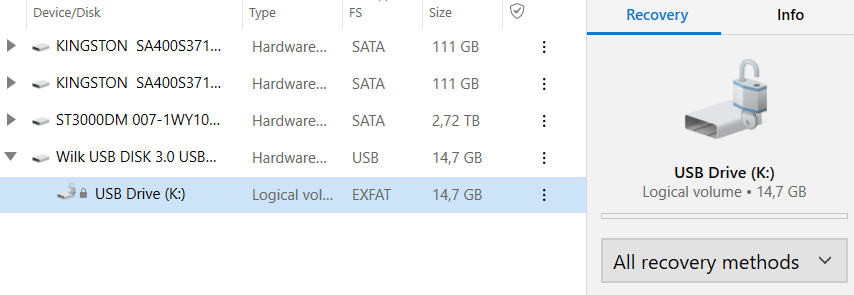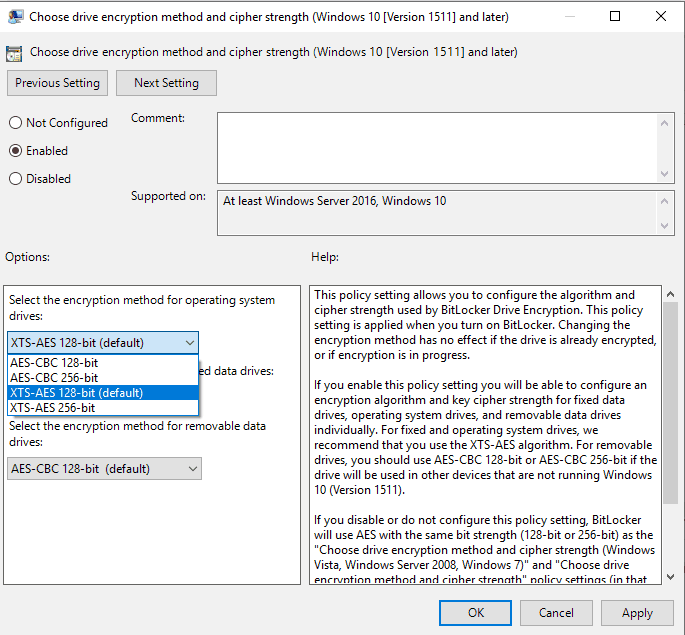

- #Hardware requirments for bitlocker on the go update
- #Hardware requirments for bitlocker on the go windows 10
- #Hardware requirments for bitlocker on the go pro
- #Hardware requirments for bitlocker on the go software
- #Hardware requirments for bitlocker on the go windows 8.1
Note that this mode requires that the BIOS on the protected machine supports the reading of USB devices in the pre-OS environment.
#Hardware requirments for bitlocker on the go software
Now, the default is to use software encryption for newly encrypted drives.
#Hardware requirments for bitlocker on the go update
In September 2019 a new update was released (KB4516071 ) changing the default setting for BitLocker when encrypting a self-encrypting hard drive.
#Hardware requirments for bitlocker on the go windows 10
Starting with Windows 10 1703, the requirements for device encryption have changed, requiring a TPM 1.2 or 2.0 module with PCR 7 support, UEFI Secure Boot, and that the device meets Modern Standby requirements or HSTI validation. While device encryption is offered on all versions of 8.1, unlike BitLocker, device encryption requires that the device meet the InstantGo (formerly Connected Standby) specifications, which requires solid-state drives, non-removable RAM (to protect against cold boot attacks) and a TPM 2.0 chip. The recovery key is stored to either the Microsoft account or Active Directory, allowing it to be retrieved from any computer. Logging in with a Microsoft account with administrative privileges automatically begins the encryption process.
#Hardware requirments for bitlocker on the go windows 8.1
Windows Mobile 6.5, Windows RT and core editions of Windows 8.1 include device encryption, a feature-limited version of BitLocker that encrypts the whole system. Finally, Windows 8 introduced Windows To Go in its Enterprise edition, which BitLocker can protect. In addition, BitLocker can now be managed through Windows PowerShell.

Starting with Windows Server 2012 and Windows 8, Microsoft has complemented BitLocker with the Microsoft Encrypted Hard Drive specification, which allows the cryptographic operations of BitLocker encryption to be offloaded to the storage device's hardware. In addition, a new command-line tool called manage-bde replaced the old f. On Windows XP or Windows Vista, read-only access to these drives can be achieved through a program called BitLocker To Go Reader, if FAT16, FAT32 or exFAT filesystems are used. The version of BitLocker included in Windows 7 and Windows Server 2008 R2 adds the ability to encrypt removable drives. Still, some aspects of the BitLocker (such as turning autolocking on or off) had to be managed through a command-line tool called f. Starting with Windows Vista with Service Pack 1 and Windows Server 2008, volumes other than the operating system volume could be encrypted using the graphical tool. Initially, the graphical BitLocker interface in Windows Vista could only encrypt the operating system volume. Windows Server 2008 and later įeatures manage-bde Developer(s).Pro, Enterprise, and Education editions of Windows 11.Pro, Enterprise, and Education editions of Windows 10.
#Hardware requirments for bitlocker on the go pro


 0 kommentar(er)
0 kommentar(er)
